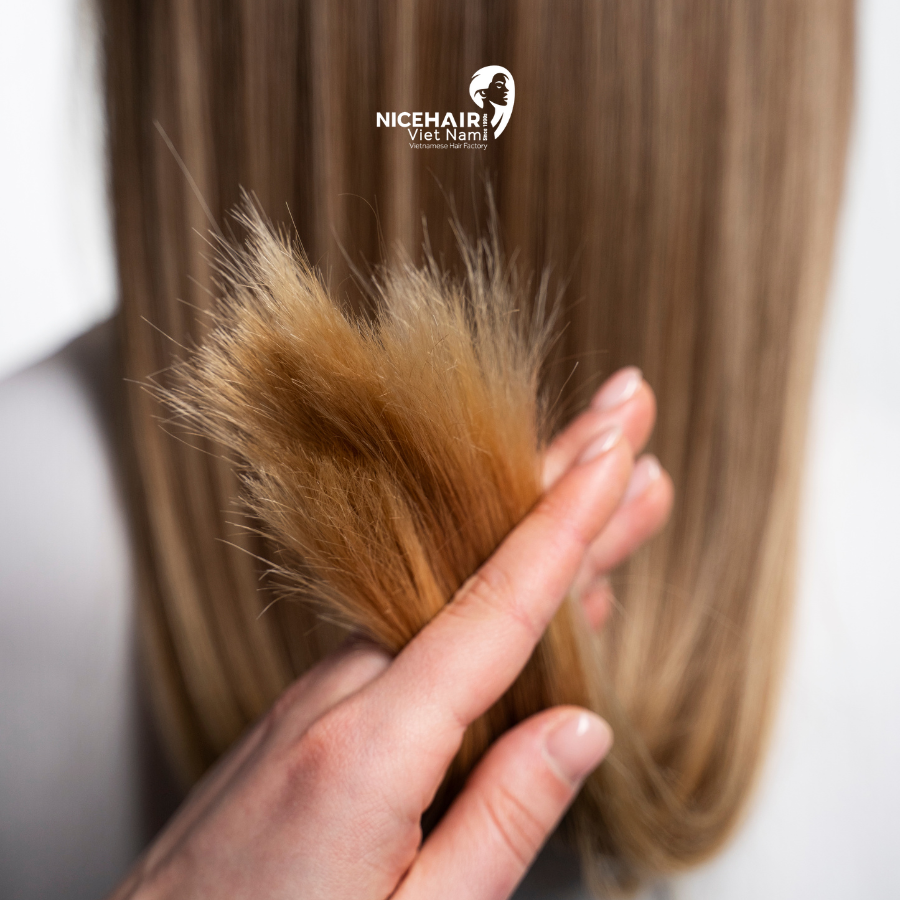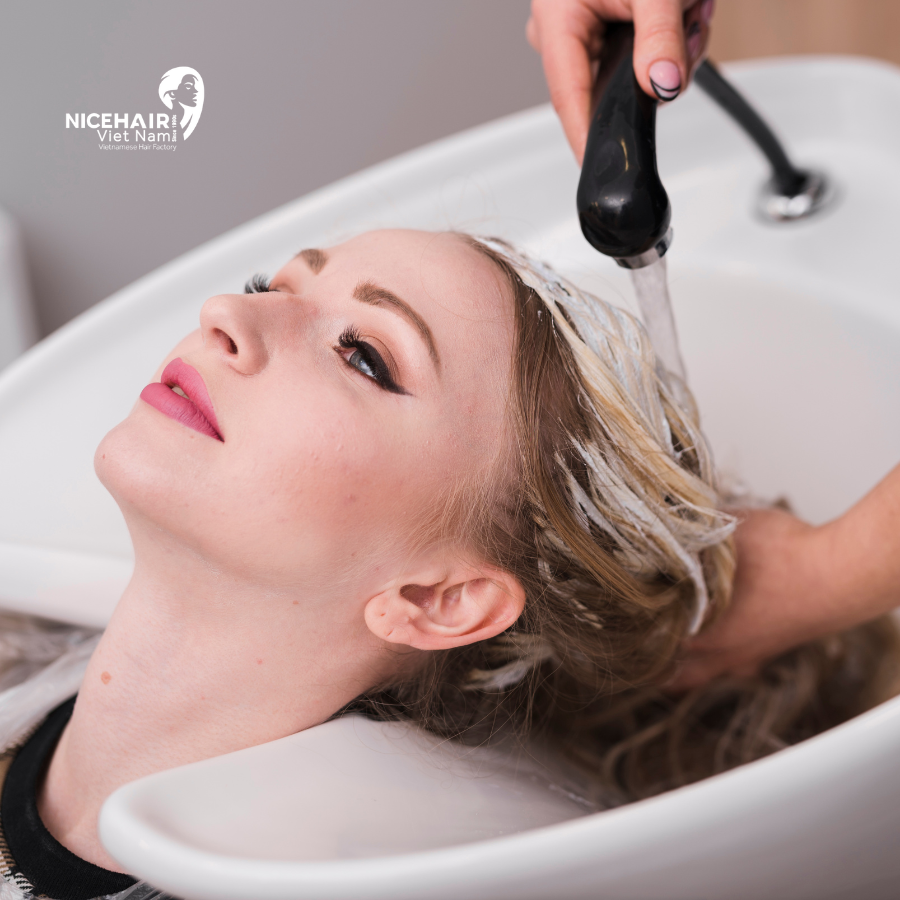Best Practices For Softening And Silkening Coarse Hair
When it comes to managing coarse hair, finding the right techniques to soften silk can be a game-changer. Coarse hair tends to be rough, dry, and prone to frizz, requiring specific care to enhance its texture and make it more manageable. In this guide, we will explore the best practices for softening and silkening coarse hair, providing you with valuable tips and techniques to transform your hair’s look and feel. Whether you have natural curls, waves, or straight hair with a coarse texture, these practices will help you achieve the smooth and lustrous locks you desire. From proper cleansing and moisturizing to protective styling and professional treatments, we will cover a range of approaches that will bring out the best in your coarse hair. Get ready to embrace the beauty of your hair and discover the secrets to soft, silky strands.

Cleaning Frequently
Maintaining clean hair is an essential step in softening and silkening coarse hair. Regular cleansing helps remove dirt, product buildup, and excess oils that can weigh down the hair and make it feel even coarser. However, it’s important to strike a balance as over-washing can strip the hair of its natural oils, leading to dryness and further coarseness. Here are some best practices for cleaning coarse hair

- Choose the right shampoo: Look for shampoos specifically formulated for dry or coarse hair. These shampoos are typically moisturizing and gentle, designed to nourish and soften the hair while cleansing it effectively.
- Use lukewarm water: Avoid using hot water as it can strip the hair of its natural moisture. Instead, opt for lukewarm water to maintain the hair’s hydration.
- Massage the scalp: While shampooing, gently massage the scalp with your fingertips to stimulate blood circulation and promote healthy hair growth. This also helps distribute the shampoo evenly and cleanse the scalp thoroughly.
- Focus on the roots: Concentrate the shampoo application on the roots of the hair where oil and dirt tend to accumulate. Avoid vigorously rubbing the lengths of the hair to prevent excessive friction and tangling.
- Rinse thoroughly: Ensure that you rinse out all the shampoo from your hair, as any residue left behind can weigh down the hair and make it feel coarse and dull.
- Follow with conditioner: Conditioner is crucial for softening and moisturizing coarse hair. Choose a rich, hydrating conditioner and apply it generously from mid-length to the ends of the hair. Leave it on for a few minutes before rinsing thoroughly.
Remember, finding the right balance and frequency of washing will depend on your hair’s specific needs and your lifestyle. Experiment with different routines to determine what works best for you. Regular cleansing, along with proper conditioning, sets the foundation for softer, silkier, and more manageable coarse hair.
Reverse Wash

One of the best practices for softening and silkening coarse hair is the reverse wash technique. Instead of the traditional method of shampooing first and then conditioning, the reverse wash technique involves switching the order. Here’s how it works:
- Wet your hair: Start by thoroughly wetting your hair with lukewarm water.
- Apply conditioner: Begin by applying a generous amount of conditioner to your hair, focusing on the mid-lengths and ends. Gently work the conditioner through the hair strands, ensuring even distribution.
- Let it sit: Leave the conditioner in your hair for a few minutes. This allows the product to penetrate deeply, moisturizing and softening the coarse hair.
- Rinse with cool water: After the conditioner has had time to work its magic, rinse your hair thoroughly with cool water. The cooler temperature helps to seal the hair cuticles, leaving your hair smoother and shinier.
- Shampoo: Once the conditioner is rinsed out, proceed to shampoo your hair. Choose a shampoo specifically designed for coarse or dry hair. Massage the shampoo into your scalp, working it gently through the hair.
- Rinse and condition (optional): After shampooing, rinse your hair thoroughly with lukewarm water. If desired, you can follow up with a small amount of conditioner applied only to the ends of your hair for added hydration.
The reverse wash technique helps to prevent the stripping of natural oils from the hair, which can contribute to dryness and coarseness. By conditioning first, you provide an extra layer of moisture and protection to your hair, making it more receptive to the cleansing properties of the shampoo. This method can leave your coarse hair feeling softer, smoother, and more manageable.
Remember, the reverse wash technique may not be suitable for everyone, as hair types and preferences vary. Experiment with this method and adjust it to fit your specific needs and desired results.
Employ hair masks
Choose the right hair mask: Look for a hair mask specifically formulated for softening and moisturizing coarse hair. Check the ingredients to ensure it contains nourishing oils, proteins, and other hydrating agents.
- Shampoo your hair: Start by shampooing your hair to remove any product buildup or impurities. Rinse thoroughly with lukewarm water.
- Apply the hair mask: Squeeze out any excess water from your hair, then apply the hair mask generously from root to tip. Make sure to distribute it evenly, focusing on the ends and areas prone to dryness.
- Massage and comb through Gently massage the hair mask into your scalp using your fingertips to stimulate blood circulation. Use a wide-tooth comb to detangle your hair and ensure the mask is evenly distributed.
- Leave it on Follow the instructions on the hair mask packaging for the recommended duration. Typically, it’s advisable to leave the mask on for 10-30 minutes to allow the ingredients to penetrate deeply into the hair shaft.
- Rinse thoroughly: After the designated time, rinse your hair thoroughly with lukewarm water. Ensure that no residue of the mask remains in your hair.
- Condition (optional): If desired, you can follow up with a lightweight conditioner to seal in the moisture and further enhance the softness of your hair. Apply the conditioner only to the lengths and ends of your hair, avoiding the roots.
- Style as usual: Proceed with your regular styling routine, whether it’s air-drying, blow-drying, or using heat styling tools. You will notice that your hair feels softer, smoother, and more manageable.
Incorporating hair masks into your hair care regimen on a weekly or bi-weekly basis can significantly improve the texture and softness of coarse hair. It provides intense hydration and replenishes moisture, leaving your hair feeling luxuriously silky and healthy.
Remember to choose a hair mask that suits your specific hair needs and adjust the frequency of use based on your hair’s condition and level of dryness. With regular use of hair masks, you can enjoy the benefits of soft and silky hair.
Use aromatic compounds
Another effective technique for softening and silkening coarse hair is to incorporate aromatic compounds into your hair care routine. Aromatic compounds, such as essential oils, can provide multiple benefits for your hair, including nourishment, hydration, and a pleasant scent. Here’s how to use aromatic compounds for the best results:
- Choose the right aromatic compounds: Select essential oils or other aromatic compounds that are known for their hair-enhancing properties. Some popular options for softening and silkening hair include lavender oil, rosemary oil, argan oil, and coconut oil.
- Dilute the aromatic compounds: Essential oils are highly concentrated and should not be applied directly to the hair or scalp. Dilute a few drops of the chosen aromatic compound in a carrier oil, such as jojoba oil or almond oil, to ensure safe and effective application.
- Perform a patch test: Before using any aromatic compound on your hair, conduct a patch test to check for any allergic reactions or sensitivities. Apply a small amount of the diluted mixture to your inner wrist or behind your ear and wait for 24 hours to see if any adverse reactions occur.
- Apply the aromatic mixture: Once you have determined that the aromatic compound is safe for you, apply the diluted mixture to your hair. Start by massaging it into your scalp, working your way down to the ends of your hair. Pay extra attention to the dry or damaged areas.
- Leave it on To allow the aromatic compounds to work their magic, leave the mixture on your hair for a specified period. This can range from 30 minutes to overnight, depending on your preference and the specific instructions of the aromatic compound.
- Rinse and cleanse: After the designated time, rinse your hair thoroughly with lukewarm water to remove any excess oils. Follow up with a gentle shampoo to cleanse your hair and scalp effectively.
- Style as desired: Proceed with your usual styling routine, whether it involves air-drying, blow-drying, or using heat styling tools. You will notice that your hair feels softer, smoother, and more fragrant.
Using aromatic compounds can not only soften and silk your coarse hair but also provide a sensory experience with their delightful scents. Experiment with different combinations of aromatic compounds to find the ones that work best for your hair type and desired results.
Remember to store your aromatic compounds properly in dark, glass containers away from direct sunlight to maintain their potency. Also, be mindful of any sensitivities or allergies you may have and discontinue use if any adverse reactions occur.
By incorporating aromatic compounds into your hair care routine, you can enjoy the benefits of beautifully soft and fragrant hair.
Healthy Eating

Another important aspect of softening and silkening coarse hair is maintaining a healthy diet. What you eat can have a significant impact on the health and appearance of your hair. Here are some dietary tips to promote healthy and lustrous hair:
- Eat a balanced diet: Ensure that your meals include a variety of nutrient-rich foods such as fruits, vegetables, whole grains, lean proteins, and healthy fats. These provide essential vitamins, minerals, and antioxidants that support overall hair health.
- Focus on protein: Hair is primarily made up of a protein called keratin. Including sufficient protein in your diet helps promote strong and healthy hair. Good sources of protein include lean meats, poultry, fish, eggs, beans, legumes, and nuts.
- Incorporate omega-3 fatty acids: Omega-3 fatty acids nourish the hair follicles, leading to softer and shinier hair. Add foods rich in omega-3s to your diet, such as fatty fish (salmon, mackerel, sardines), walnuts, flaxseeds, and chia seeds.
- Get enough vitamins and minerals: Certain vitamins and minerals play a crucial role in hair health. Include foods that are rich in vitamin C (citrus fruits, berries, peppers), vitamin E (avocado, nuts, seeds), vitamin A (carrots, sweet potatoes, spinach), and biotin (eggs, nuts, whole grains).
- Stay hydrated: Drinking an adequate amount of water helps keep your hair hydrated and prevents it from becoming dry and brittle. Aim to drink at least 8 glasses of water per day and increase your intake if you lead an active lifestyle.
- Limit processed foods and sugary snacks: Highly processed foods and sugary snacks can contribute to inflammation and nutrient deficiencies, which can negatively impact hair health. Opt for whole, unprocessed foods as much as possible.
- Consider supplements: If you struggle to meet your nutritional needs through diet alone, consult with a healthcare professional about incorporating hair-healthy supplements such as biotin, collagen, or other targeted hair supplements.
Remember, achieving soft and silky hair requires a holistic approach, and proper nutrition plays a vital role. By nourishing your body with a healthy and well-balanced diet, you can support the overall health of your hair and enhance its texture and appearance.
Conclusion
class=”flex justify-between lg:block”>In conclusion, incorporating best practices for softening and silkening coarse hair can help transform your locks into smooth, lustrous strands. By following a consistent hair care routine, including techniques such as cleaning frequently, using the reverse wash method, employing hair masks, utilizing aromatic compounds, and maintaining a healthy diet, you can nourish and enhance the texture of your hair.
class=”flex justify-between lg:block”
Remember, everyone’s hair is unique, so it’s important to experiment and find the techniques and products that work best for you. Be patient and consistent in your hair care routine, and over time, you will notice a significant improvement in the softness and silkiness of your coarse hair.
By implementing these best practices and giving your hair the attention it deserves, you can enjoy the benefits of beautifully soft and silky hair that enhances your overall appearance and boosts your confidence. Start incorporating these tips into your routine and unlock the potential of your coarse hair for a stunning transformation.
Contact us
+ Website: nicehairvietnam.com
+ Whatsapp: (+84) 846009647
+ Email: hakan@nicehairvietnam.com
+ Factory address: Factory No1, Dong Tho’s Street Zone, Yen Phong Dist., Bac Ninh Province, Vietnam.
+ Office: No.25 Tho Thap Ward, Dich Vong Hau Ward, Cau Giay District, Hanoi City, Viet Nam.

